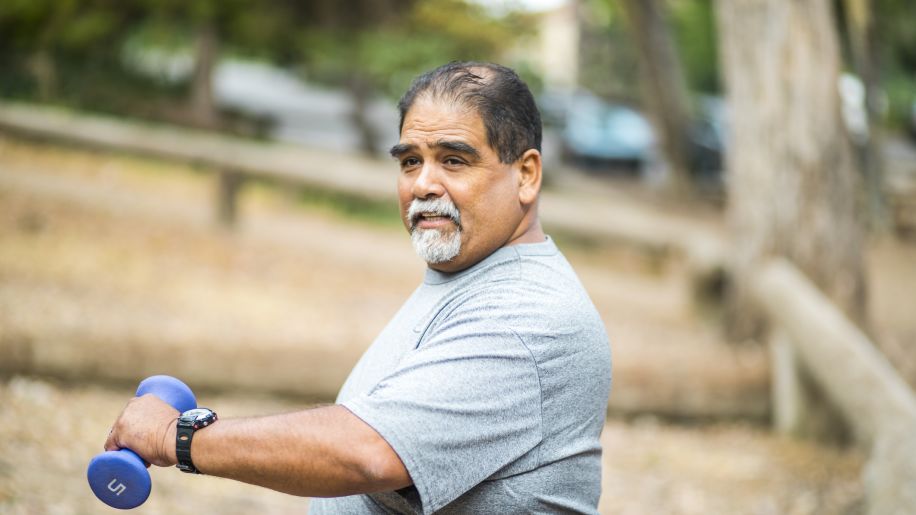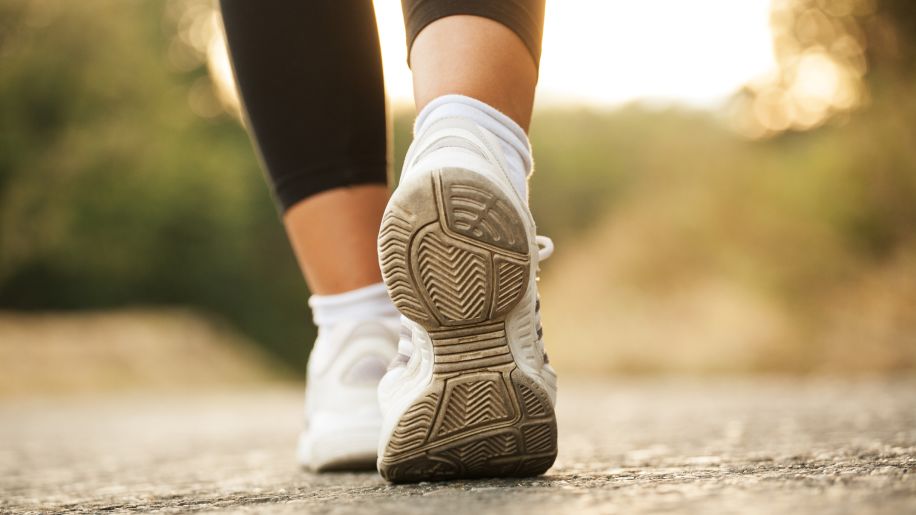8 best workouts for diabetes
Try these workouts for better blood sugar.
Updated on March 25, 2024

Getting regular physical activity is important for good health. And for people who have diabetes, exercise can be essential for helping to manage the condition, as well.
"Trying to manage diabetes without being physically active is like a singer performing without a microphone," says Gary Scheiner, MS, CDE, author of Think Like a Pancreas: A Practical Guide to Managing Diabetes with Insulin. "Exercise is one of the most empowering things you can do to lower your blood glucose and control your diabetes."
If you have diabetes and are looking for ways to be active, consider one of these eight expert-recommended workouts.

Take a walk
The act of walking is one of the best exercises you can do for diabetes, says Betul Hatipoglu, MD, an endocrinologist in Cleveland, OH. "You just need a pair of shoes. You can do it anywhere, anytime," she adds. If you have questions about the right type of shoes to wear when you have diabetes and whether your insurance may cover, talk with your healthcare provider.
If it’s been awhile since you exercised or you have physical limitations, start by taking a few short walks a day as you are able. Even just a 10-minute stroll offers health benefits. Do errands on foot, walk through the mall, or take a midday walk at lunch. Aim to ultimately walk about 30 minutes a day, five times each week, recommends the American Diabetes Association.

Add physical activity to your day
Everyday chores can help add more physical activity to your routine. "There is plenty you can accomplish while burning calories and lowering blood sugar," Dr. Scheiner says. "Just about any form of movement is helpful."
Gardening, housekeeping, and washing the car are all great ways to be active, he notes. Walking the dog, doing errands on foot, or playing active games with your family or friends count, too.

Try tai chi
Tai chi originated in China as a martial art and can be a great way to reduce stress, improve balance, and enhance flexibility.
According to a 2018 review of studies in the Journal of Diabetes Research, tai chi can help people with diabetes. The practice may improve how the body manages blood sugar levels, and doing it consistently over the long term can have even more positive effects.
"Tai chi is really good for both balance and flexibility at the same time," says Sheri R. Colberg, PhD, a professor of exercise science at Old Dominion University in Norfolk, Virginia, and author of Diabetic Athlete’s Handbook: Your Guide to Peak Performance. "It also works on muscle strength and helps lower glucose [blood sugar levels] because it lowers stress."
Tai Chi does not require special equipment, and commuity centers or outreach organizations may provide free Tai Chi programs. Look for it in your area, or ask your healthcare provider about it.

Go swimming
For people who have diabetes, water exercises—such as water aerobics, swimming, and water walking—can be great, low-intensity heart workouts that burn calories and improve flexibility. They’re even largely safe for people who have peripheral neuropathy, a complication of diabetes that can cause damage to your nerves. Symptoms include weakness, numbness, tingling, and pain in the hands and feet.
For people with loss of feeling in their feet, water exercises can be kinder and gentler, Dr. Colberg says. If you have arthritis (stiffness, swelling or pain in the joints), water workouts can be better for the joints.

Practice your balance
Diabetic neuropathy can throw off your walking and make balance more difficult. "With age, you naturally lose some balancing ability," Colberg says. "People with diabetes often lose sensation in their feet, so they don’t know where they’re placing their feet." Balance exercises help counteract that.
For a beginner exercise, try standing on one foot, steadying yourself with one hand on a chair or countertop. Gradually increase the challenge over time, first using one finger to steady yourself, and then doing it entirely without your hands. Finally, try doing it with your eyes closed. Practice balancing on each foot.

Try strengthening your muscles
Adults—including those with chronic conditions—should engage in muscle-strengthening activities like pushups, situps, resistance bands, or lifting weights at least two days per week, according to the Centers for Disease Control and Prevention (CDC).
Usually, exercise leads to lower blood sugar levels, because when you use your muscles, you burn sugar. However, strenuous workouts, like heavy weightlifting and sprinting, can cause blood sugar levels to do the opposite—go up. These more intense exercises stimulate your liver to release more sugar.
This means that for people with diabetes, some care and attention is needed when engaging in strenuous exercise. Here are some tips from the American Diabetes Association:
- Take care not to eat too many carbohydrates before or during a workout.
- Instead of lifting heavy weights, do more repetitions with lighter weights.
- Practice relaxation techniques before and during your workout to help offset the release of the hormone adrenaline, which can make blood sugar levels rise.
- Try not to work out in the mornings, to avoid the naturally higher blood sugar levels that occur between 4:00 and 8:00 am.
Talk with your healthcare provider (HCP) to determine the best plan for safely doing other strenuous exercise. Your HCP may also help you adjust your short-acting diabetes medications to use before workout sessions.

Try interval training
Injecting bursts of high-intensity activity into your workouts—known as interval training—can help improve your blood sugar control and insulin resistance, boost cardiovascular (heart and blood vessel) health, and build stamina. But don’t forget that safe workouts involve good planning: It’s important to consult with your HCP before starting any new exercise routine, particularly one more strenuous than walking. As with other types of strenuous exercise, interval training may have the opposite effect on blood sugar levels, and increase them.
Here's the basic idea about interval training: If you’re out on a walk, you can alternate between a fast pace and slow pace. Colberg recommends starting with short 15- to 30-second bursts of intensity and gradually working up to longer intervals of a minute or two.

Do what you love
Whether it's ballroom dancing, hiking in nature, or a rigorous game of ping pong, the key to exercise is doing something you love.
"Any type of exercise is good for people with diabetes," says Steve Edelman, MD, founder of the educational organization Taking Control of Your Diabetes. "Do what you enjoy or else you will not be consistent."
If you love an activity—whether it's a formal exercise program or a physically active hobby—you're more likely to stick with it. Keep in mind that any amount of movement is better than none. Every minute of exercise as you are able adds up, and will work toward reducing your risk for diabetes complications, including heart disease.

American Diabetes Association. Fitness. Accessed on April 24, 2023.
American Diabetes Association. The Benefits of Walking. Accessed on April 24, 2023.
American Diabetes Association. Overcome Barriers and Get Moving. Accessed on April 24, 2023.
Centers for Disease Control and Prevention. Higher Daily Step Count Linked with Lower All-Cause Mortality. March 24, 2020.
Chao M, Wang C, Dong X, Ding M. The Effects of Tai Chi on Type 2 Diabetes Mellitus: A Meta-Analysis. J Diabetes Res. 2018 Jul 5;2018:7350567.
American Diabetes Association. Exercising with Diabetes Complications. Accessed on April 24, 2023.
American Diabetes Association. Understanding Neuropathy and Your Diabetes. Accessed on April 24, 2023.
Arthritis Foundation. Hit the pool to relieve joint pain. Accessed on April 24, 2023.
American Diabetes Association. Balance Training. Accessed on April 24, 2023.
Centers for Disease Control and Prevention. Physical Activity: Adults with Chronic Health Conditions and Disabilities. Page last reviewed July 7, 2021.
American Diabetes Association. Why does exercise sometimes raise blood glucose (blood sugar)? Accessed on April 24, 2023.
Peng Y, Ou Y, Wang K, et al. The effect of low volume high-intensity interval training on metabolic and cardiorespiratory outcomes in patients with type 2 diabetes mellitus: A systematic review and meta-analysis. Front Endocrinol (Lausanne). 2023 Jan 4;13:1098325.
American Diabetes Association. Putting the Fun in Fitness. Accessed on April 24, 2023.
Featured Content

article

article

article

slideshow
